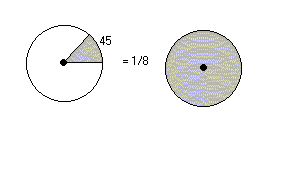Please wait while we process your payment
If you don't see it, please check your spam folder. Sometimes it can end up there.
If you don't see it, please check your spam folder. Sometimes it can end up there.
Please wait while we process your payment

By signing up you agree to our terms and privacy policy.
Don’t have an account? Subscribe now
Create Your Account
Sign up for your FREE 7-day trial
By signing up you agree to our terms and privacy policy.
Already have an account? Log in
Your Email
Choose Your Plan
Individual
Group Discount
Save over 50% with a SparkNotes PLUS Annual Plan!
 payment page
payment page
Purchasing SparkNotes PLUS for a group?
Get Annual Plans at a discount when you buy 2 or more!
Price
$24.99 $18.74 /subscription + tax
Subtotal $37.48 + tax
Save 25% on 2-49 accounts
Save 30% on 50-99 accounts
Want 100 or more? Contact us for a customized plan.
 payment page
payment page
Your Plan
Payment Details
Payment Summary
SparkNotes Plus
You'll be billed after your free trial ends.
7-Day Free Trial
Not Applicable
Renews May 1, 2025 April 24, 2025
Discounts (applied to next billing)
DUE NOW
US $0.00
SNPLUSROCKS20 | 20% Discount
This is not a valid promo code.
Discount Code (one code per order)
SparkNotes PLUS Annual Plan - Group Discount
Qty: 00
SparkNotes Plus subscription is $4.99/month or $24.99/year as selected above. The free trial period is the first 7 days of your subscription. TO CANCEL YOUR SUBSCRIPTION AND AVOID BEING CHARGED, YOU MUST CANCEL BEFORE THE END OF THE FREE TRIAL PERIOD. You may cancel your subscription on your Subscription and Billing page or contact Customer Support at custserv@bn.com. Your subscription will continue automatically once the free trial period is over. Free trial is available to new customers only.
Choose Your Plan
This site is protected by reCAPTCHA and the Google Privacy Policy and Terms of Service apply.
For the next 7 days, you'll have access to awesome PLUS stuff like AP English test prep, No Fear Shakespeare translations and audio, a note-taking tool, personalized dashboard, & much more!
You’ve successfully purchased a group discount. Your group members can use the joining link below to redeem their group membership. You'll also receive an email with the link.
Members will be prompted to log in or create an account to redeem their group membership.
Thanks for creating a SparkNotes account! Continue to start your free trial.
We're sorry, we could not create your account. SparkNotes PLUS is not available in your country. See what countries we’re in.
There was an error creating your account. Please check your payment details and try again.
Please wait while we process your payment

Your PLUS subscription has expired
Please wait while we process your payment
Please wait while we process your payment

Area of Circles
Like the circumference of a circle, its area is dependent only on the radius. The area of a circle is equal to the product of pi and the radius squared (Πr2).
The formula for the area of a circle helps us calculate the area of circle sectors and segments as well. A circle sector's area in relation to the area of the whole circle is much like that between an arc and the circumference. A sector bound by a central angle of n degrees is equal to (n/360) times the area of the circle.

The area of a circle segment is slightly more difficult to calculate. If given the measure of the central angle or the measure of the arc of the segment, along with the length of the chord that determines the segment, then it is possible to calculate the difference in area between the sector that contains the segment and the triangle formed by the central angle and the chord. The area of a segment equals the area of the sector containing it minus the area of the triangle within the sector. The illustration makes this more clear.

With these new tools to calculate perimeter and area, we have another way to make comparisons between figures. Very soon we'll be able to look at a figure and use our knowledge of geometric relationships to understand a great deal about that figure from very little given information. Perimeter and area provide a great help in this endeavor; with an understanding of perimeter and area, the good mathematician can look at certain existing conditions and deduce that two figures with the same area must be congruent. This is one of the most powerful ways to use geometry.
Please wait while we process your payment

